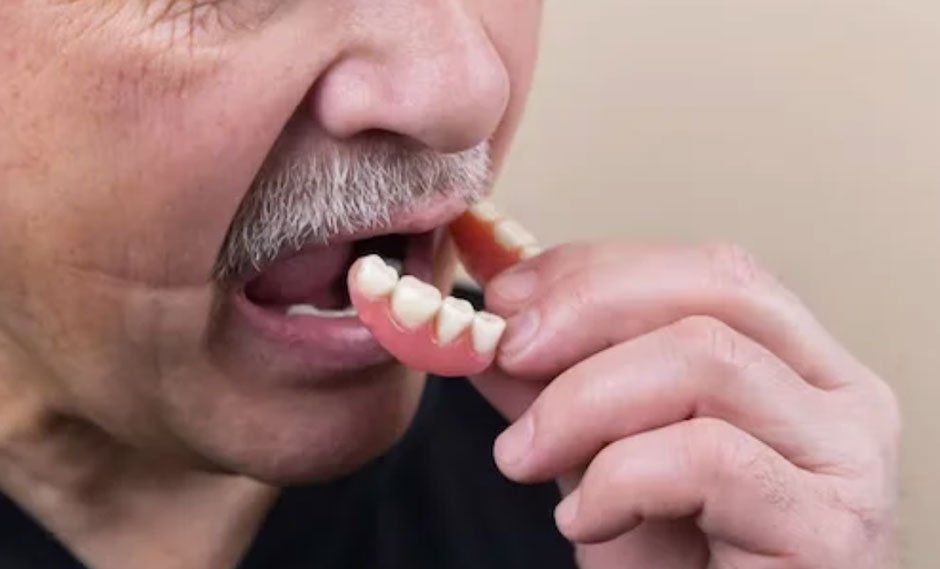Increasingly sufferers with oral myiasis, or more widely, mouth larva, have been seen by oral health specialists in recent years. it’s essential to recognize this infection, the available treatments, and the significance of an early prognosis to prevent the worsening of the situation.
we will move into the area of mouth larvae in this blog, overlaying its causes and hazard elements, the life cycle and increase of the mouth larvae involved, the clinical signs and symptoms and outcomes related to the infection, and the laboratory prognosis method.
In addition, we’ll examine the several therapies and prophylactic actions that medical experts advise, as well as a thorough examination of the diverse hosts, transmission pathways, and environmental elements that contribute to the infection’s spread. To shed light on this expanding issue, we will also examine pertinent reports and case studies from the actual world.
Knowing the Reasons Behind Mouth Larva
To effectively treat any disease, we must understand its underlying etiology. This holds for mouth larvae as well.
1. Agents Causative
The larva that cause this ailment are produced by insects such as Sarcophagidae, Cochliomyia hominivorax, and Chrysomya bezziana. Live or dead tissue can be consumed by these mouth larvae. They may also ingest food or bodily fluids.
2. Typical larval hosts
The disease-causing larvae are frequently seen in a variety of animal hosts. These comprise birds, rodents, and livestock animals.
3. Human transmission pathways
Mouth larvae can infect humans if they consume tainted food or drink. Other typical reasons include direct contact with the larvae in the mouth and inadequate dental hygiene.
4. Risk factors for mouth larva development
A person’s risk of getting mouth larvae might be increased by variables like general health, lifestyle choices, and environmental factors.
5. Dispersion in Geography
Mouth larvae are more prevalent in warm, humid environments. These are the areas where certain flies prefer to live.
6. More Vulnerable People
Individuals with compromised immune systems or inadequate dental care are more vulnerable to oral larvae. Additionally, people who have oral injuries or sores may contract the illness. Individuals who live in unclean conditions and have physical or mental limitations are among the other high-risk populations. A variety of factors can lead to this, including drug abuse, frequent teeth extractions, foul breath, and mouth breathing as you sleep. Mouth larvae are another name for mouth maggots.
Immune system deficiencies, open sores, mental and physical impairments, and filthy living circumstances
Studies show that mouth larvae are nothing more than an oral infection. Another name for this is myiasis. It could happen as a result of neglect or as a side effect of long-term medical conditions if inadequate oral hygiene is maintained.
Mouth Larva Types
What is mouth larva? Fly eggs or larvae infestation in the oral cavity can cause mouth larvae, a disturbing condition. Comprehending the various varieties of mouth larvae is crucial for prompt identification and suitable management.
- The human botfly, or Dermatobia Hominis Larvae: These larvae are spread by mosquito bites, and when an egg comes into touch with warm human skin, it hatches. Afterward, the larvae may dig into the oral tissues and cause pain.
- The New World Screwworm, Cochliomyia Hominivorax Larvae:
These larvae, which are usually found in tropical areas, feed on living tissue and infest open lesions, including those in the mouth.
- Ovis oestrus (Sheep botfly) Larvae: They primarily afflict animals, although they can also infect humans. The larvae might irritate the mouth if they are inadvertently swallowed or get inside through the nose.
- Horse botfly, or Gasterophilus spp. Larvae: Though seldom observed in humans, these larvae have the potential to cause discomfort and difficulties if they unintentionally infest the oral cavity.
To effectively treat mouth larvae, it is essential to identify their particular species. To guarantee a correct diagnosis and suitable action, any indications of infestation, such as ongoing discomfort or strange sensations in the mouth, should be treated right away by a medical professional.
The Larvae Life Cycle Associated with Mouth Larva
Gaining a thorough understanding of the condition requires knowledge of the life cycle of the larvae that cause mouth larvae.
Initial phases of larval development
Usually, female flies lay their eggs on animals. This is especially true in the vicinity of open wounds or sores and around the mouth, nose, and ear mucous membranes. The larvae can emerge from these eggs in a day or so. After that, the larvae tunnel into the host’s tissue to begin feeding.
How the larvae enter the mouth and spread infection
Larva in mouth can infect people through tainted food or drink. An infection is also more likely to occur when dental hygiene is poor. The larvae may even immediately penetrate the cheeks, tongue, or gums.
My experience has shown that applying turpentine oil, mineral oil, chloroform, ethyl chloride, or mercuric chloride to the affected area can help relieve mouth larvae. According to certain research, it is also possible to surgically remove the larvae and then sanitize the area. For best results, though, all of these drugs have to be used following a professional consultation.
Signs and symptoms
Common symptoms of mouth larvae include localized edema, redness, and discomfort. Patients may complain of having a foreign body in their mouth or experiencing movement. In addition, pain, irritation, and foul-smelling discharges are rather typical.
Difficulties and recurring problems
Mouth larva can cause severe, long-lasting harm to the oral tissues if treatment is not received. It may result in tooth loss, gum abscesses, and other bacterial diseases. The mouth larva sickness has the potential to become fatal in really bad cases by causing blood infection.
If you experience any of the above symptoms or indicators, you should speak with a professional right away. They are the only ones who can determine whether your symptoms are caused by mouth larvae or by any other oral or dental condition that may require emergency care.
For ease of comprehension, these points are displayed in the following table:
Signs and Symptoms
- Redness and swelling
- Severe injury to the tissue
- Feeling of motion
- Bacterial infections that recur
- Anguish, distress, and foul-smelling fluids
- Gum abscesses, movement of the teeth
In summary
Mouth larva is a complicated medical disorder that necessitates a thorough comprehension of its underlying causes and risk factors in addition to the capacity to identify its unique clinical presentations. Developing an appropriate treatment method to manipulate the contamination, relieve pain, and stop the condition from occurring once more calls for a thorough and correct analysis based on laboratory checking.
furthermore, expertise in the life cycle, hosts, routes of transmission, and environmental elements that influence the development of contamination allows everybody, consisting of healthcare experts, to make nicely knowledgeable decisions approximately infection prevention and management.
Through the examination and acquisition of knowledge from case studies and publications of mouth larvae from diverse sources, we can augment our proficiency and understanding in managing this burgeoning issue.







